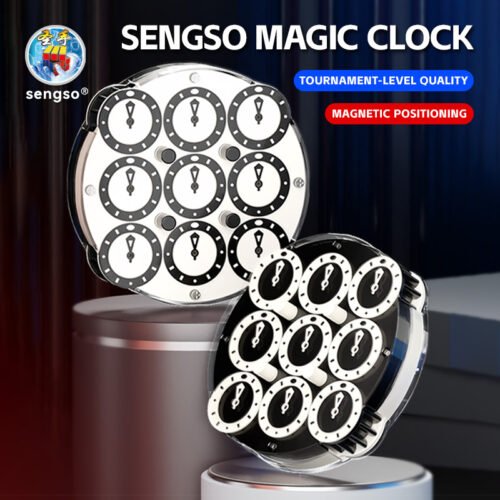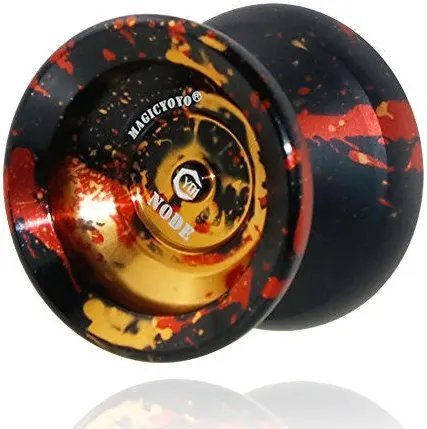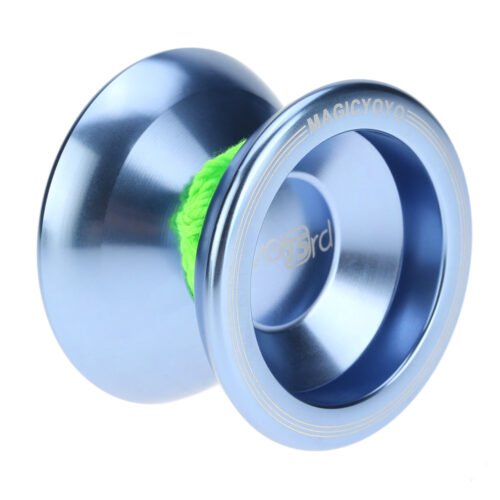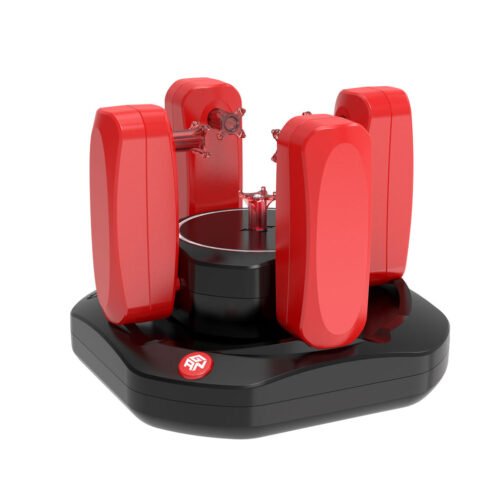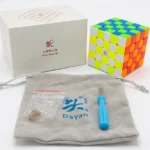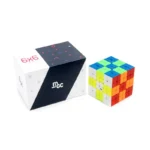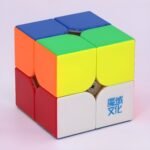
Table of Contents
Introduction to Rubik’s Cubes
Rubik’s Cubes are three-dimensional combination puzzles that challenge users to align the cube’s faces so that each side displays a single color. Invented in 1974 by Hungarian architect Ernő Rubik, the cube was initially intended as a teaching tool for spatial relationships. However, its appeal soon grew beyond educational purposes, leading to its commercialization in the late 1970s. The puzzle gained immense popularity during the 1980s, turning into a global sensation. Today, the Rubik’s Cube is recognized as one of the best-selling puzzles ever, with millions of units sold worldwide.
The diverse approaches to solving a Rubik’s Cube have contributed to its lasting popularity. Many enthusiasts engage in speedcubing, competing to solve the cube in the shortest possible time. Others enjoy the mental challenge, viewing the puzzle as a stimulating brain exercise. In recent years, a plethora of online resources have emerged, guiding individuals on how to solve a Rubik’s Cube using various methods and techniques. Though many may perceive this colorful cube as a difficult puzzle, it is essential to understand that anyone can learn the necessary algorithms and strategies to solve it. Importantly, whether one is asking themselves, “How long does it take to solve a Rubik’s Cube?” or “Can I solve the Rubik’s Cube?” the answer often lies in practice and perseverance.
The widespread appeal of Rubik’s Cubes is reflected in their presence in different cultures and communities worldwide. With numerous variations and an abundance of puzzling options available today, it is evident that the Rubik’s Cube transcends barriers, captivating minds of all ages. In this exploration of Rubik’s Cubes and their varying difficulty levels, we will uncover effective methods for solving them, the best cubes available in India, and insights that will make the puzzling experience accessible to everyone.
The Perception of Difficulty
Many enthusiasts and newcomers alike often wonder, “Can I solve Rubik’s Cube?” The perception of its difficulty has become a noteworthy point of discussion. For many, the iconic puzzle appears daunting due to its vibrant colors and complex structure. In reality, several misconceptions contribute to this intimidation factor. Firstly, the sheer number of possible arrangements—over 43 quintillion—can be overwhelming. This astronomical figure suggests that solving the cube is an insurmountable challenge, deterring inexperienced individuals from even attempting to learn how to solve a Rubik’s Cube.
Another element that amplifies this perception is the lack of foundational knowledge regarding solving techniques. Without insight into structured methodologies, beginners may perceive the cube as a chaotic assembly of colors with no apparent pathway to resolution. In truth, numerous resources are available that encompass various problem-solving methods, ranging from beginner algorithms to advanced speedcubing techniques. This lack of familiarity creates a misconception that solving the cube is a talent reserved for the naturally gifted or those with exceptional spatial reasoning capabilities.
The intimidation factor extends beyond mere complexity; it often stems from the fear of failure. Many potential solvers question their cognitive abilities, leading them to believe that solving the cube is an endeavor beyond their capabilities. As such, they may ask, “How long does it take to solve the Rubik’s Cube?”—an inquiry that reflects their uncertainty about their proficiency. However, the learning curve is significantly less steep than it initially appears. With patience and practice, individuals will discover that the combination of mathematical principles and strategic thinking can effectively lead them to the solution beyond the perceived difficulty.
Is It Possible for Everyone to Solve a Rubik’s Cube?
The Rubik’s Cube has long been a symbol of intellectual challenge, sparking curiosity and interest among individuals of various ages and backgrounds. A common question arises: can I solve the Rubik’s Cube? The answer is a resounding yes. With the appropriate guidance and dedication, nearly anyone can learn how to solve a Rubik’s Cube, regardless of their cognitive abilities or prior experience with puzzles.
One of the primary factors influencing one’s ability to solve a Rubik’s Cube is the approach taken towards learning it. Cognitive skills such as spatial awareness and memory play a role, but these can be developed with practice. Many online tutorials and instructional videos provide step-by-step methods that simplify the process, allowing learners to grasp the fundamental concepts before tackling more complex techniques. Some methods, such as the beginner’s method, break down the puzzle-solving process into manageable parts, thus making it more accessible.
Moreover, remarkable success stories exist across diverse communities. Children, adults, and even seniors have shared their triumphs in learning Rubik’s Cube solutions, demonstrating that age is not a barrier to mastering this perplexing puzzle. For example, a retired teacher in her 70s successfully learned how to solve the cube, attributing her achievement to patience and consistency in practice. Alternatively, a group of young students competed in a school event, showcasing their ability to solve the Rubik’s Cube in under a minute.
How long it takes to solve the Rubik’s Cube varies from one individual to another and depends greatly on personal commitment and regular practice. By fostering problem-solving skills and encouraging methodologies that suit individual learning styles, anyone can embark on the journey to successfully navigate this iconic puzzle. Thus, the answer to whether everyone can solve a Rubik’s Cube is affirmative—dedication and the right resources can make it possible.
How Long Does It Take to Learn to Solve a Rubik’s Cube?
Learning to solve a Rubik’s Cube can vary significantly from person to person, primarily depending on the method chosen and the individual’s prior experience with similar puzzles. For beginners, grasping the basic techniques often takes anywhere from a few days to several weeks. A common starting point is the Beginner’s Method, which introduces new solvers to the six essential algorithms needed to make progress. Once these algorithms are memorized and practiced, most will find that they can solve the cube consistently within 1-2 minutes per solve.
Factors influencing how long it takes to solve a Rubik’s Cube include the learner’s cognitive abilities, familiarity with spatial puzzles, and the amount of practice devoted to solving. For instance, those who practice regularly may reduce their solving time significantly. Moreover, individuals who already engage in activities that enhance their problem-solving skills, such as playing chess or programming, may find it easier to learn how to solve a Rubik’s Cube.
As solvers advance to more complex methods, such as CFOP (Cross, F2L, OLL, PLL) or Roux, they may require additional weeks or months of dedicated practice. With these methods, practitioners can expect to achieve solving times of under 30 seconds as they refine their algorithms and techniques. Overall, it’s essential to approach learning with patience and consistency. Creating a structured practice routine can lead to significant improvements over time.
To facilitate efficient learning, utilizing online resources and joining the Rubik’s Cube community can be remarkably beneficial. Websites, forums, and YouTube tutorials provide valuable insights for budding cubers, ensuring they are equipped to tackle the challenge. While the journey may differ for each individual, the accomplishment of mastering the cube is rewarding, paving the way for endless possibilities with this fascinating puzzle.
Basic Methods of Solving a Rubik’s Cube
When considering how to solve a Rubik’s Cube, it is essential to explore several popular methods that cater to varying skill levels and preferences. Each method offers a unique approach, allowing individuals to find one that suits their learning style and problem-solving capabilities.
One of the most commonly used techniques is the Layer by Layer (LBL) approach, which is particularly beginner-friendly. This method involves solving the cube one layer at a time, allowing novices to grasp the fundamentals of the cube’s mechanics. The process begins with solving the first layer, followed by the middle layer, and concludes with the final layer. While this approach is easy to understand, it can be somewhat time-consuming, as it often requires numerous moves to achieve the finished product.
Another widely recognized technique is the CFOP method, which stands for Cross, F2L (First 2 Layers), OLL (Orientation of the Last Layer), and PLL (Permutation of the Last Layer). This comprehensive method is favored by many speedcubers due to its efficiency and speed. The step-by-step breakdown allows for better optimization in terms of solving time. However, it requires a more in-depth understanding of algorithms, which may prove challenging for absolute beginners.
For those seeking a simpler alternative, there are also several beginner-friendly techniques available. These methods often focus on intuitive movements and simple patterns, making them accessible for individuals unfamiliar with more complex algorithms. While they may not yield the fastest solving times, they provide a solid foundation on which to build further skills.
In conclusion, each of these methods presents distinct advantages and challenges. Whether you are asking, “Can I solve a Rubik’s Cube?” as a newcomer or seeking to refine your skills with advanced techniques, understanding these basic methods will aid greatly in your journey to mastering the cube.
Advanced Techniques for Speedcubing
For those aspiring to enhance their Rubik’s Cube solving skills, understanding advanced techniques is essential. The techniques employed by speedcubers can significantly reduce the time it takes to solve the cube. One of the prominent methods is the First Two Layers (F2L) technique. This approach involves pairing the corner and edge pieces of the first two layers simultaneously, rather than completing them sequentially. By employing F2L, solvers can save valuable seconds in their overall solving time, making it a preferred strategy for those asking, “Can I solve Rubik’s Cube faster?”
Next in line is the Orientation of the Last Layer (OLL) phase, where the last layer’s pieces are oriented correctly. Mastering OLL allows a speedcuber to complete this step with a single algorithm, which is a significant advantage. Subsequently, the Permutation of Last Layer (PLL) phase comes into play, where the pieces are arranged in their correct positions. Learning the various PLL algorithms can drastically cut down the solving time since it provides a method for completing the last layer with efficiency. Many wonder how long it takes to solve the Rubik’s Cube when using these advanced techniques; the answer often falls into a matter of seconds for experienced cubers.
To excel in speedcubing, practicing these algorithms and understanding when to apply them is crucial. Furthermore, incorporating finger tricks can lead to faster execution and improved dexterity. Speedcubers often emphasize the importance of consistent practice and time management in mastering how to solve a Rubik’s Cube effectively. For anyone looking to push their limits, these advanced methods and tips will play a vital role in elevating their skills, enabling them to enjoy the competitive aspect of the Rubik’s Cube community.
Choosing the Best Rubik’s Cube in India
When it comes to selecting the best Rubik’s Cube in India, several factors should be considered to ensure a suitable match for your needs. The choice can significantly impact your ability to learn how to solve a Rubik’s Cube efficiently. One of the first aspects to evaluate is the brand. Well-known brands such as Mcubes India offer reliable options that are trusted by both beginners and expert solvers alike.
Another essential factor is the type of Rubik’s Cube. Traditional 3×3 cubes are the most common, but there are also variations such as 2×2 cubes and larger 4×4 or 5×5 cubes. Each type presents varied challenges and solutions; therefore, selecting the right cube depends on your current skill level and your aspirations to learn the art of solving. Beginners may benefit from starting with a simpler model, while advanced users may prefer more complex configurations.
Durability is also a crucial consideration when selecting a Rubik’s Cube. Quality build and materials can influence how long the cube lasts and how well it performs. Look for cubes that have smooth rotation and can withstand frequent handling, especially if you are curious about how long it takes to solve a Rubik’s Cube as you practice. Ideally, a well-constructed cube will enhance your solving experience.
Lastly, recommend setting a budget that aligns with your financial capabilities. Cubes can range from economical options to premium models. The good news is that brands like Mcubes India provide a variety of models at diverse price points without compromising quality. Whether you are pondering how to solve a Rubik’s Cube for fun or considering it seriously, choosing the right cube will set the foundation for your journey.
Mcubes India: Quality Cubes with Great Offers
When exploring the world of Rubik’s Cubes, it is crucial to identify reliable sources for purchasing these intriguing puzzles. Mcubes India has emerged as a prominent provider of high-quality Rubik’s Cubes, catering to both beginners and seasoned enthusiasts. Established in 2018, the company has garnered a reputation for offering an extensive range of cubes that suit different skill levels and preferences, ensuring that customers can find a product that aligns with their specific needs.
The offerings at Mcubes India encompass various types of Rubik’s Cubes, from the classic 3×3 models to more advanced versions like 4×4 and 5×5 cubes. This variety allows individuals to explore the question, “can I solve a Rubik’s Cube?” at different levels of complexity. Each cube is crafted with precision, promoting smooth rotations and enhancing the overall solving experience. Furthermore, customers can also find instructional materials, which can aid in understanding techniques on how to solve a Rubik’s Cube efficiently.
One of the striking benefits of shopping at Mcubes India is their commitment to customer satisfaction. The company offers free shipping on orders above ₹499, making it more economical for buyers. Additionally, Mcubes India provides an easy exchange policy, ensuring that customers are satisfied with their purchases. If a product does not meet expectations, the straightforward return process offers peace of mind. This approach underlines their dedication to maintaining high standards in product quality and service.
Moreover, Mcubes India stands out by offering a money-back guarantee, demonstrating confidence in their products. This assurance fosters trust among customers, encouraging them to delve into the fascinating world of Rubik’s Cubes without the worry of financial risk. By prioritizing both quality and customer support, Mcubes India is a reliable option for individuals looking to engage with Rubik’s Cubes and solve them with confidence.
Conclusion: Embracing the Challenge
In conclusion, the realm of Rubik’s Cubes offers a fascinating journey filled with puzzles and satisfaction. While one might initially wonder, “Can I solve the Rubik’s Cube?” it is essential to recognize that many have successfully navigated this challenge, transforming an intimidating puzzle into an enjoyable experience. With patience and practice, anyone can learn how to solve a Rubik’s Cube, unlocking not only the handsome cube but also a sense of accomplishment.
As we delve into various methods for solving the cube, it becomes evident that a structured approach can make a significant difference. Whether you are learning basic algorithms or exploring advanced techniques, the learning curve is manageable for most enthusiasts. Many beginners often ask, “How long does it take to solve the Rubik’s Cube?” and it varies with practice and familiarity with the methods. With dedication, what seems difficult at first can become a streamlined process.
Moreover, the fascination does not just end with mastering the cube. The vibrant community surrounding Rubik’s Cubes encourages continued growth and learning. Challenge yourself by experimenting with different types of cubes available through Mcubes India, as these alternatives can enhance your cubing experience. The key takeaway is that embracing the challenge leads to both mental stimulation and enjoyment. Therefore, it is advisable to explore all aspects of Rubik’s Cubes with an open mind and recognize that the journey towards solving it is just as rewarding as reaching the end. So, engage with this intriguing puzzle and discover that anyone can become a skilled cuber with the right support and resources. If you are looking for international purchase, visit our global store


